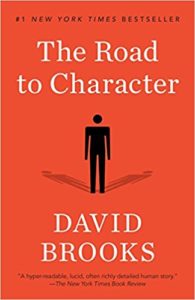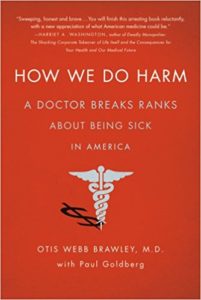Strengthlab on Jul 2nd 2018 StrengthLab Thoughts
With the wisdom, humor, curiosity, and sharp insights that have brought millions of readers to his New York Times column and his previous bestsellers, David Brooks has consistently illuminated our daily lives in surprising and original ways. In The Social Animal, he explored the neuroscience of human connection and how we can flourish together. Now, in The Road to Character, he focuses on the deeper values that should inform our lives.
Looking to some of the world’s greatest thinkers and inspiring leaders, Brooks explores how, through internal struggle and a sense of their own limitations, they have built a strong inner character. Labor activist Frances Perkins understood the need to suppress parts of herself so that she could be an instrument in a larger cause. Dwight Eisenhower organized his life not around impulsive self-expression but considered self-restraint. Dorothy Day, a devout Catholic convert and champion of the poor, learned as a young woman the vocabulary of simplicity and surrender. Civil rights pioneers A. Philip Randolph and Bayard Rustin learned reticence and the logic of self-discipline, the need to distrust oneself even while waging a noble crusade.
Blending psychology, politics, spirituality, and confessional, The Road to Character provides an opportunity for us to rethink our priorities, and strive to build rich inner lives marked by humility and moral depth.
https://www.amazon.com/gp/product/0812983416/ref=oh_aui_detailpage_o04_s00?ie=UTF8&psc=1

Strengthlab on Jul 2nd 2018 StrengthLab Thoughts
How We Do Harm exposes the underbelly of healthcare today―the overtreatment of the rich, the under treatment of the poor, the financial conflicts of interest that determine the care that physicians’ provide, insurance companies that don’t demand the best (or even the least expensive) care, and pharmaceutical companies concerned with selling drugs, regardless of whether they improve health or do harm.
Dr. Otis Brawley is the chief medical and scientific officer of The American Cancer Society, an oncologist with a dazzling clinical, research, and policy career. How We Do Harm pulls back the curtain on how medicine is really practiced in America. Brawley tells of doctors who select treatment based on payment they will receive, rather than on demonstrated scientific results; hospitals and pharmaceutical companies that seek out patients to treat even if they are not actually ill (but as long as their insurance will pay); a public primed to swallow the latest pill, no matter the cost; and rising healthcare costs for unnecessary―and often unproven―treatments that we all pay for. Brawley calls for rational healthcare, healthcare drawn from results-based, scientifically justifiable treatments, and not just the peddling of hot new drugs.
Brawley’s personal history – from a childhood in the gang-ridden streets of black Detroit, to the green hallways of Grady Memorial Hospital, the largest public hospital in the U.S., to the boardrooms of The American Cancer Society―results in a passionate view of medicine and the politics of illness in America – and a deep understanding of healthcare today. How We Do Harm is his well-reasoned manifesto for change.
https://www.amazon.com/gp/product/1250015766/ref=oh_aui_detailpage_o04_s00?ie=UTF8&psc=1

Strengthlab on Jul 2nd 2018 StrengthLab Thoughts
Muscular strength, muscular endurance and cardiorespiratory endurance decline mostly because of a lack of exercise, not because of factors associated with biological aging. Comprehensive research clearly shows that physical disuse accelerates the aging process and physical atrophy can begin at any age due to inactivity.
Strengthlab on Jul 2nd 2018 StrengthLab Thoughts
If you live a sedentary lifestyle… by the age of 50 you will have lost approximately 25% of your physical capacity (that’s your independence we are talking about here). That’s exactly 1% of lost physical capacity per year from the age of 25 to 50 years of age. That’s pretty disturbing for independent minded people!
Now contrast that lost 25% physical capacity with only 3.9% lost physical capacity of those who remained vigorously active until the age of 50. Now that’s impressive!
To reiterate, sedentary individuals lose 25% of their abilities by the age of 50… while active individuals lose less than 4% of their abilities by the age of 50!
That’s plenty of reason to push on or get started!

